The kitchen table isn’t far from the altar in Kathy and Tim Johnson’s home. A comfortable recliner and cozy couch share the living room with a wooden pew. Stained-glass windows cast colorful shadows across their bedroom.
“Other people walk in and they stop and they just go, ‘wow,’’’ Kathy Johnson said.
“We just kind of forget that it was a church.”
After over a century of worship, Zion Evangelical Lutheran Church in Benedict closed its doors in January 2020. Seven months later, the Johnsons bought it.
This house of worship turned home is one of a number of Nebraska churches that, amid rising costs and falling attendance, have found second lives filling gaps in their local communities. Churches are becoming apartments, community centers and places to preserve history and foster the arts.
In early February, the Lincoln City Council signed off on a proposal to turn the former Southminster Methodist Church into offices and apartments.
Cadre Architecture and Design is set to buy the church for $350,000 after New Visions United Methodist Church decided to merge into one building and sell their two remaining properties in Lincoln.
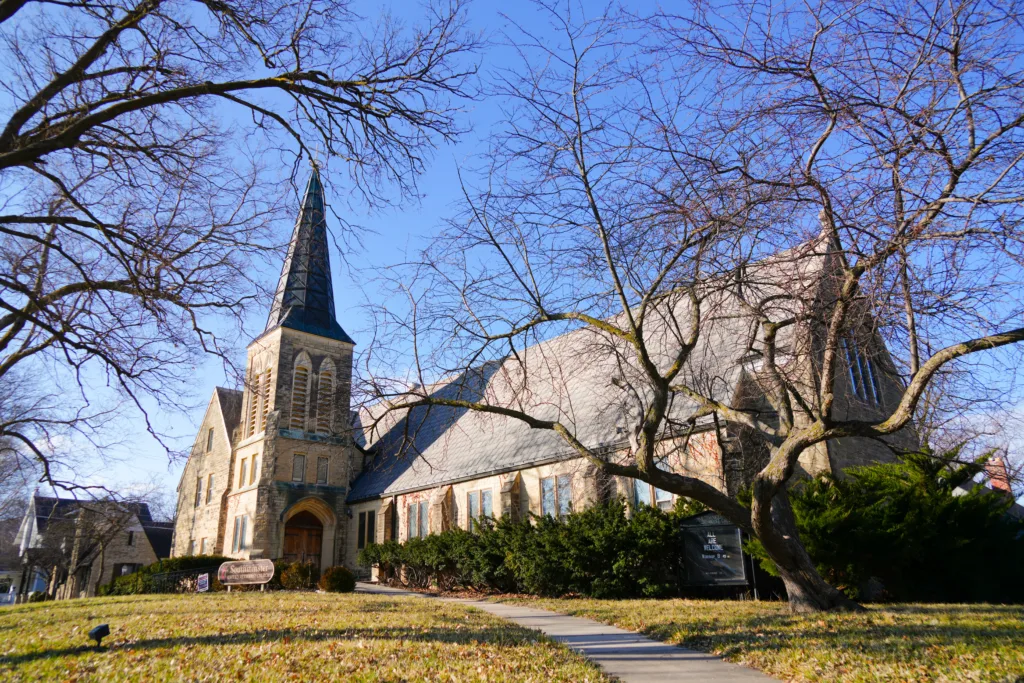
A Baptist congregation bought the first, while the latter, awaiting a religious buyer, received only secular offers. Other proposals included a gym and an art gallery.
“We were focused on selling the buildings to other churches, but it doesn’t have to be that way,” New Visions board chair Beth Baldwin said.
New Visions had a front row seat to what Rick Reinhard calls the “great mismatch.”
Aging congregations no longer have the resources or numbers to fill and maintain large and, in some cases, deteriorating buildings, said Reinhard, an urban planner and consultant who spent four years assessing United Methodist Church properties across the U.S.
He points to four factors that have contributed to the mismatch: declining membership, rising property expenses, virtual livestream options and COVID-19.
“There was hope that someday we would get back to being three separate churches after the pandemic, but it just became so obvious that something needed to be done,” said the Rev. Doyle Burbank-Williams, pastor at New Visions.
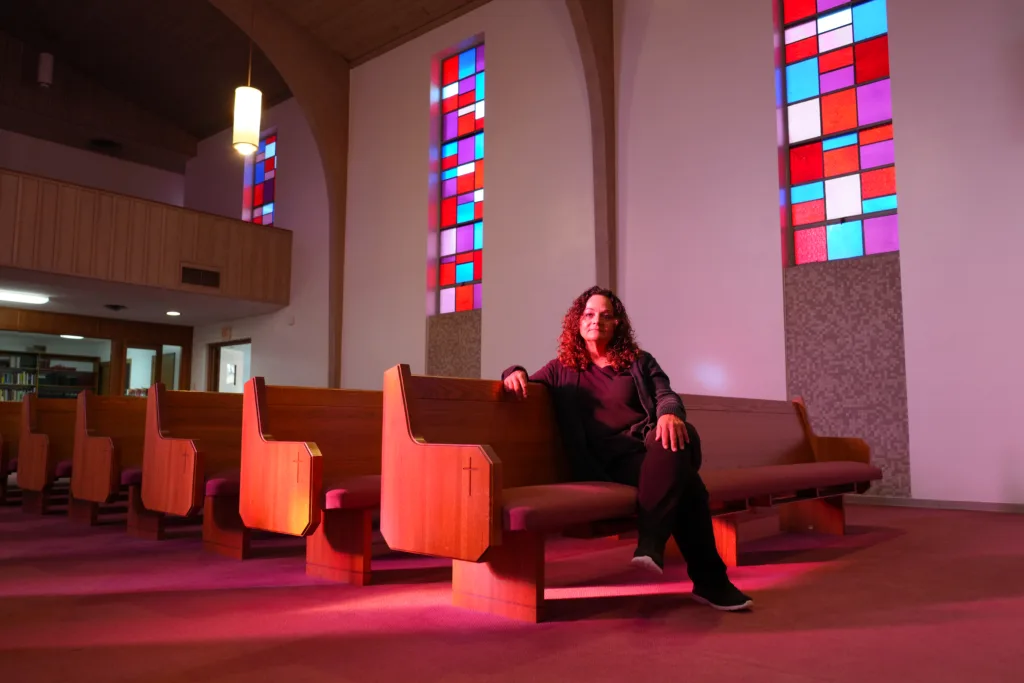
Americans’ participation in organized religion has declined in recent decades, multiple surveys have shown.
A study by the Public Religion Research Institute found a combined 56% of respondents in 2022 said they either seldom or never attend religious services – up from 43% in 2013.
That tracks with research by the Hartford Institute for Religion Research that found median attendance at weekly worship services decreased from 137 attendees in 2000 to 65 attendees in 2020.
The Omaha Archdiocese, which spans from Omaha to Sioux City, told the Flatwater Free Press that only 25% of Catholics in northeast Nebraska attend Sunday Mass and there’s been a 42% decline in mass attendance since 2003. Fifteen churches in the Archdiocese have closed since 2000.
The United Methodist Church Great Plains Conference, which includes Nebraska and Kansas, has seen 81 churches close since 2014.
Three other Christian religious authorities in Nebraska contacted by the Flatwater Free Press either did not respond or said they did not keep records of closures to confidently report.
Part of the mismatch, Reinhard said, lies in the fact that many churches were constructed at a time when they needed to be within walking distance.
“Well, not only do we have motorized vehicles now we have the internet,” he said. “So if I want to watch the Archbishop of Canterbury service in London, all I need to do is to click the mouse.”
Churches are also expensive to operate. The International Facility Management Association estimates that it costs $7 to $10 per square foot annually to run a church.
Rising maintenance costs factored into the decision to sell the First Baptist Church in Wayne in 2021, according to Matt Ley.
Ley bought the property for $175,000 after seeing the listing on Facebook. At one point, he said, the congregation was considering selling the church windows, demolishing the building and selling the lot. He thought that would be a mistake.
“You cannot build that building the way it is now for less than $4 million these days,” Ley said.
He renovated the church into six apartment units, which now rent for between $1,000 and $2,000 a month.
“I really just wanted to save one of the most beautiful buildings in town and provide different housing options.”
Nebraska hasn’t been immune from a nationwide housing shortage. A 2022 report by the Strategic Housing Council of Nebraska found a statewide shortage of 32,230 rental units for extremely low-income households. The report noted the shortage extends to housing at all price points across the state.
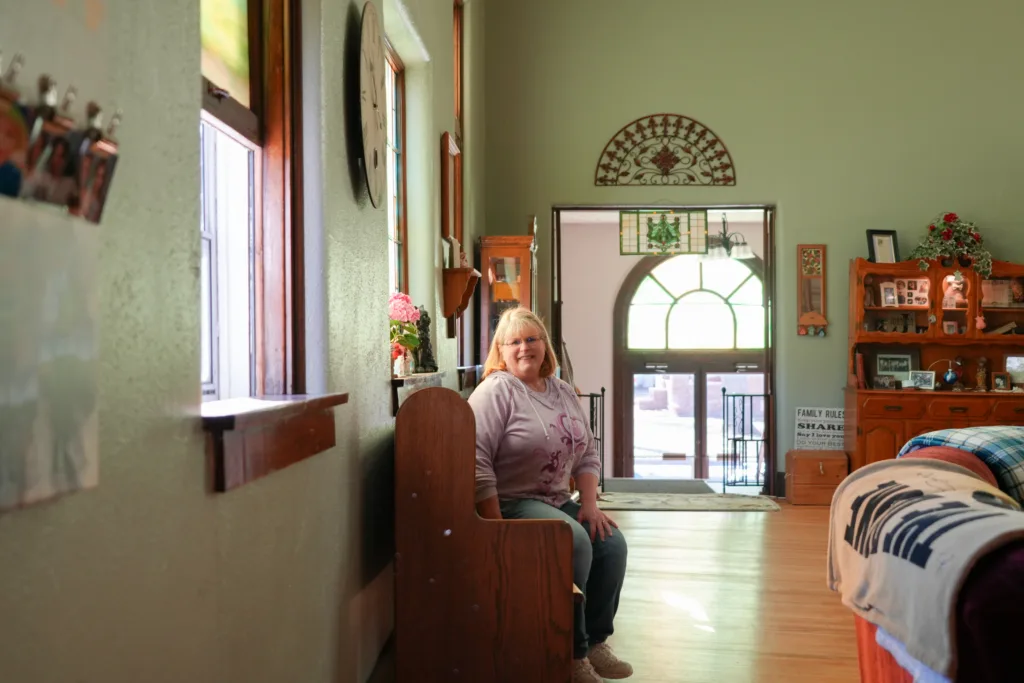
Kathy and Tim Johnson sold their home in York and moved into the former church in Benedict out of a desire to live closer to family without the burden of a mortgage.
They bought and renovated the 5,100-square-foot church for less than $100,000, most of which was used to build a kitchen, add plumbing upstairs and update the wiring.
“Overall, the structure was basically sound as far as not needing any repairs,” Tim Johnson said.
The Johnsons were initially concerned about the utility bills, but they’ve turned out to be manageable.
“If you don’t want to be in debt, go buy a church in a small town,” said Kathy Johnson, a former member of the church she now lives in.
While housing is a common use for a church’s second act, it’s not the only one.
The First Presbyterian Church in Madison was sold for $5,000 and turned into a nonprofit arts center in 2007; the former Immanuel Lutheran Church in Snyder was converted into a museum in 2018; and the Seward Chamber of Commerce bought and repurposed a local Presbyterian church to become the Olde Glory Theatre in 2013.
In Pilger, St. Peter’s Lutheran Church managed to survive a pair of devastating tornadoes in 2014. But it ultimately couldn’t survive falling attendance and a lack of volunteers, said Gene Willers, a former member of St. Peter’s.
The church closed in January 2023 and the congregation donated the building to the Stanton County Historical Society, which now runs a museum out of the former church.
With only one Lutheran church remaining in town, Willers said most people drive to Norfolk or Wisner to attend religious services.
“It’s just a hard adjustment,” he said.
In the Lutheran Church–Missouri Synod district that covers all of Nebraska, minus the panhandle, 35 churches have closed or disbanded since 2000. (Editor’s note: This story has updated with a new figure provided by the Lutheran Church–Missouri Synod.)
When Rev. Scott Alan Johnson became bishop of the Nebraska Synod of the Evangelical Lutheran Church in America 18 months ago, one church was in the process of closing. Another went through from start to finish and a third has begun.
Closures can be emotional experiences, especially for families who have deep connections to a church, said Rev. Johnson, who noted that some properties can also include a cemetery.
“There has not been any pushback, but is there grief? Yes,” he said.
Some Nebraska churches are choosing to restructure their congregations rather than sell or donate their properties.
In 2022, the Omaha archbishop grouped 134 Catholic churches into 33 families across eastern Nebraska. The change allows parishes to better coordinate resources that can address declining attendance, population changes and shifting cultural attitudes, said Riley Johnson, Omaha Archdiocese communications director.
No parishes have made a decision to merge or close since the restructure.
“We want to pivot our attention from maintaining buildings and structures to the mission that we’re all called as Christians,” said Johnson, “which is to go out and to bring the hope of the Gospel to our neighbors.”
Burbank-Williams at New Visions in Lincoln shared a similar message.
“The closing of the other two churches gave this one life,” he said.
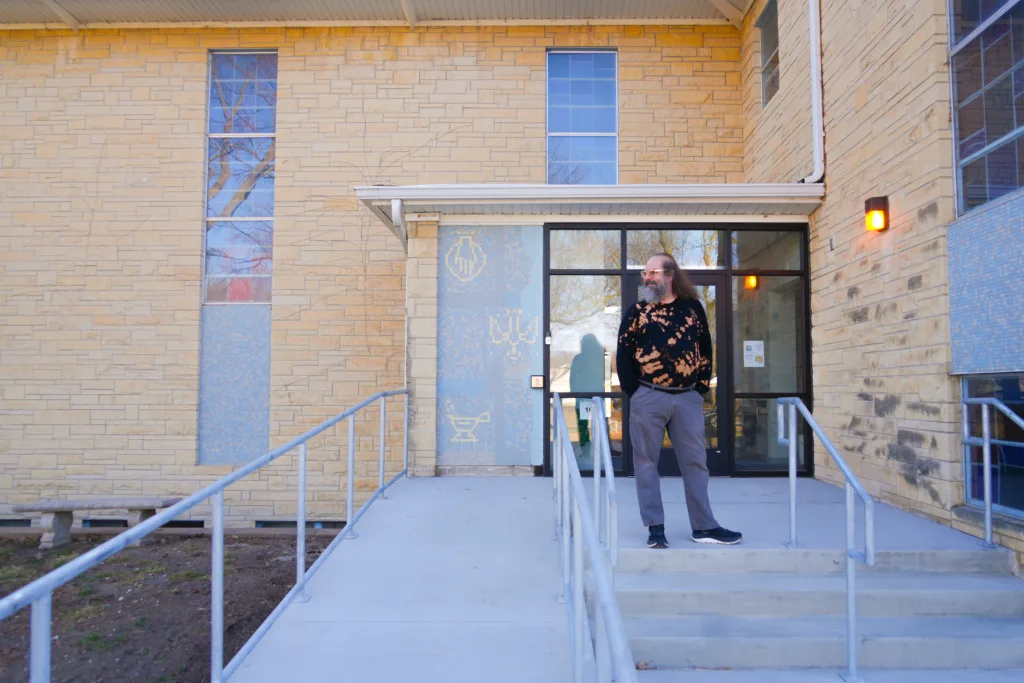
Money from the sales funded renovation projects at their current location, including a new sign, handicap parking, and environmental updates to the building, according to Burbank-Williams. These sales will also help replenish New Visions’ reserves after years of income losses.
“There are churches like us that have given themselves permission to not do things the way they’ve always been done,” he said. “And those churches I think are growing.”

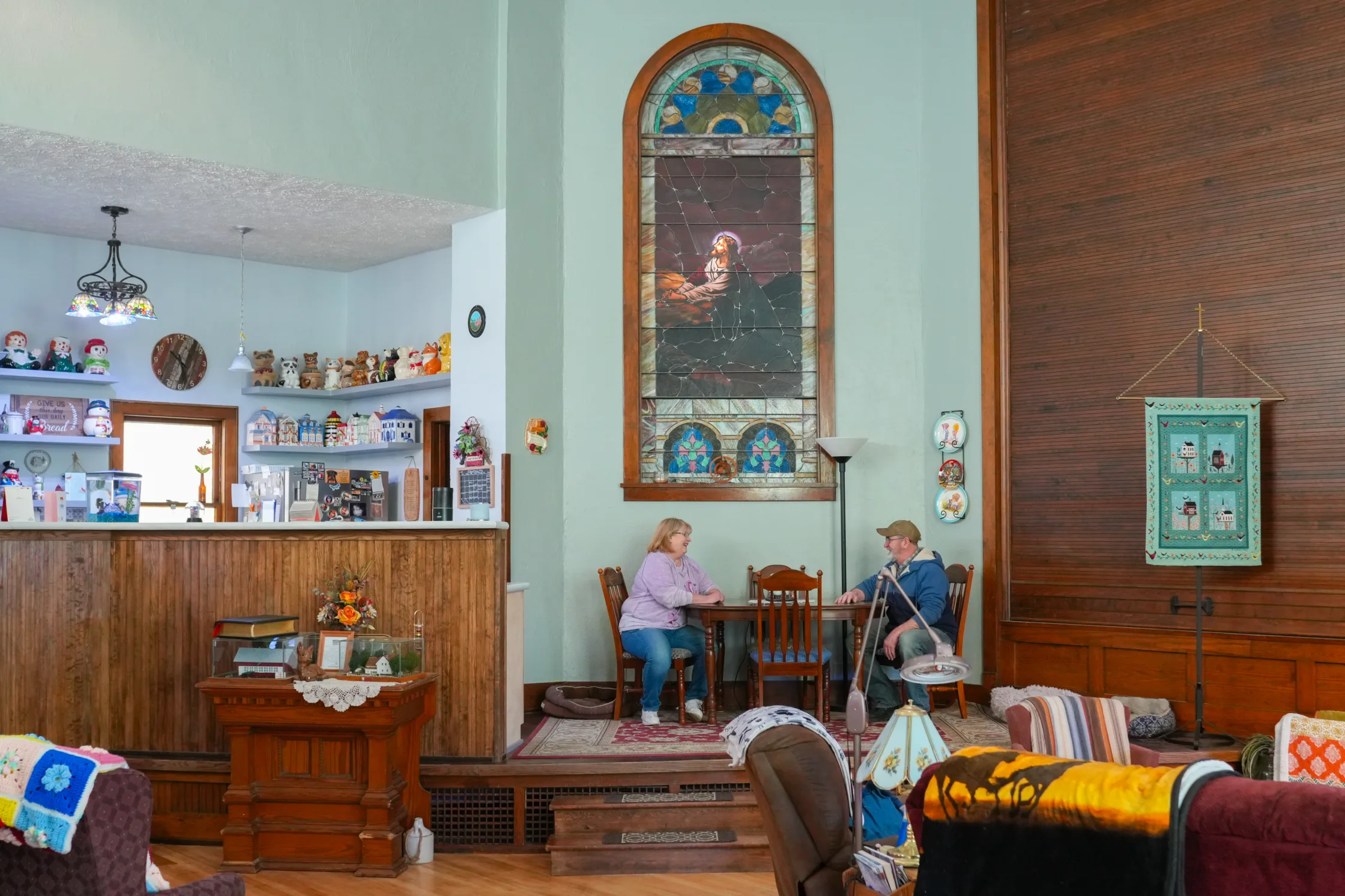

8 Comments
The ultimate reason these churches are closing is that they no longer meet the religious needs of their communities.
Not really the reason.
The actual reason that church attendance is steadily decreasing is that more and more folks [wrongly] believe that they are their own churches.
It’s not about “meeting needs”; it’s about hubris.
A portion of the secular, atheistic crowd are crowing about the empty pews across America signaling the end of the Jesus movement which has already mostly dried up in Western Europe. Yet the Christian Church is very much alive and growing in Africa, Asia, and South America making the Richard Dawkins of the world to look very provincial and Eurocentric in their thinking. Perhaps the global South will yet send Christian missionaries to the US to teach once more the Gospel events which divided our very history from BC into the year of our Lord 2024.
The church spoke of in the Bible, has nothing to do with bricks and mortar. That’s a human construct. Obviously many journalists don’t understand that fact. As the other poster pointed out, God’s church is growing through out the world. As the Bible states, more will not be saved than those saved.
“The church spoke of in the Bible, has nothing to do with bricks and mortar.”
Really? Which Bible did you read?
Did you read about tablets? Altars? Temples? Or St. Paul’s visits to the various “churches”?
I guess one remembers what one wishes to remember. Or maybe one wishes to be his own church and so he can ignore the Bible? It’s just easier that way, right?
Dan, I don’t know what to say. The meaning of words isn’t static over a 2000 year period. We have a word to describe a building where people come to give glory to God. It’s called a church.
The story was very balanced and sympathetic toward congregants and leadership.
The church I grew up in was from the merger of an EUB (Evangelical United Brethern) and the local Methodist church when the two denominations came together in 1969. Then in January 2023 the church moved to disassociate with the United Methodist church over liberal theological issues the UM church is embracing. My hometown is now a non-denominational community church. The congregation refused throw in the towel and they are thriving.
A most interesting article, very well done, EXCEPT for the teeny weeny itsy bitsy typeface on the cutlines. Almost impossible for this 91 year old long ago news editor of the Lincoln Star to decipher.